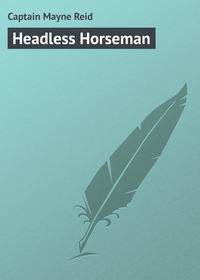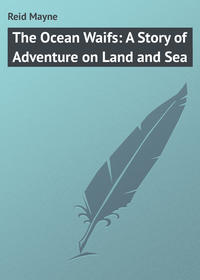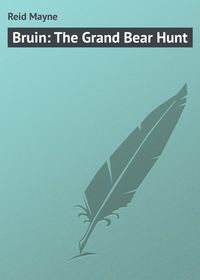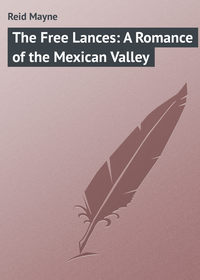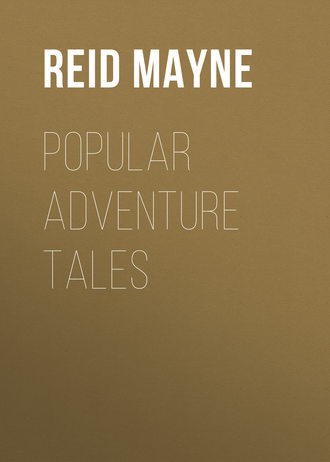 полная версия
полная версияPopular Adventure Tales
Our voyageurs saw that there were two kinds of them, entirely different in colour, size, and other respects. The larger ones were of a greyish yellow above, with an orange tint upon the throat and belly. These were the “tawny marmots,” called sometimes “ground-squirrels,” and by the voyageurs, “siffleurs,” or “whistlers.”
The other species seen were the most beautiful of all the marmots. They were very little smaller than the tawny marmots; but their tails were larger and more slender, which rendered their appearance more graceful. Their chief beauty, however, lay in their colours and markings. They were striped from the nose to the rump with bands of yellow and chocolate colour, which alternated with each other, while the chocolate bands were themselves variegated by rows of yellow spots regularly placed. These markings gave the animals that peculiar appearance so well known as characterising the skin of the leopard, hence the name of these little creatures was “leopard marmots.”
It was plain from their actions that both kinds were “at home” among the mounds, and that both had their burrows there. This was the fact, and Norman told his companion that the two kinds are always found together, not living in the same houses, but only as neighbours in the same “settlement.” The burrows of the “leopard” have much smaller entrances than those of their “tawny kin,” and run down perpendicularly to a greater depth before branching off in a horizontal direction. A straight stick may be thrust down one of these full five feet before reaching an “elbow.”
The holes of the tawny marmots, on the contrary, branch off near the surface, and are not so deep under ground. This guides us to the explanation of a singular fact – which is, that the “tawnies” make their appearance three weeks earlier in spring than the “leopards,” in consequence of the heat of the sun reaching them sooner, and waking them out of their torpid sleep.
While these explanations were passing among the boys, the marmots had come out, to the number of a score, and were carrying on their gambols along the declivity of the hill. They were at too great a distance to heed the movements of the travellers by the camp fire. Besides, a considerable valley lay between them and the camp, which, as they believed, rendered their position secure. They were not at such a distance but that many of their movements could be clearly made out by the boys, who after a while noticed that several furious battles were being fought among them. It was not the “tawnies” against the others, but the males of each kind in single combats with one another.
They fought like little cats, exhibiting the highest degree of boldness and fury; but it was noticed that in these conflicts the leopards were far more active and spiteful than their kinsmen. In observing them through his glass Lucien noticed that they frequently seized each other by the tails, and he further noticed that several of them had their tails much shorter than the rest. Norman said that these had been bitten off in their battles; and, moreover, that it was a rare thing to find among the males, or “bucks,” as he called them, one that had a perfect tail!
While these observations were being made, the attention of our party was attracted to a strange animal that was seen slowly crawling around the hill. It was a creature about as big as an ordinary setter dog, but much thicker in the body, shorter in the legs, and shaggier in the coat. Its head was flat, and its ears short and rounded. Its hair was long, rough, and of a mottled hoary grey colour, but dark-brown upon the legs and tail. The latter, though covered with long hair, was short, and carried upright; and upon the broad feet of the animal could be seen long and strong curving claws. Its snout was sharp as that of a greyhound – though not so prettily formed – and a white stripe, passing from its very tip over the crown, and bordered by two darker bands, gave a singular expression to the animal's countenance.
It was altogether, both in form and feature, a strange and vicious-looking creature. Norman recognised it at once as the “blaireau,” or American badger. The others had never seen such a creature before – as it is not an inhabitant of the South, nor of any part of the settled portion of the United States.
The badger when first seen was creeping along with its belly almost dragging the ground, and its long snout projected horizontally in the direction of the marmot “village.” It was evidently meditating a surprise of the inhabitants. Now and then it would stop, like a pointer dog when close to a partridge, reconnoitre a moment, and then go on again. Its design appeared to be to get between the marmots and their burrows, intercept some of them, and get a hold of them without the trouble of digging them up – although that would be no great affair to it, for so strong are its fore-arms and claws that in loose soil it can make its way under the ground as fast as a mole.
Slowly and cautiously it stole along, its hind-feet resting all their length upon the ground, its hideous snout thrown forward, and its eyes glaring with a voracious and hungry expression. It had got within fifty paces of the marmots, and would, no doubt, have succeeded in cutting off the retreat of some of them, but at that moment a burrowing owl that had been perched upon one of the mounds, rose up, and commenced hovering in circles above the intruder. This drew the attention of the marmot sentries to their well-known enemy, and their warning cry was followed by a general scamper of both tawnies and leopards towards their respective burrows.
The blaireau, seeing that further concealment was no longer of any use, raised himself higher upon his limbs, and sprang forward in pursuit. He was too late, however, as the marmots had all got into their holes, and their angry “seek-seek” was heard proceeding from various quarters out of the bowels of the earth. The blaireau only hesitated long enough to select one of the burrows into which he was sure a marmot had entered; and then, setting himself to his work, he commenced throwing out the mould like a terrier. In a few seconds he was half buried, and his hind-quarters and tail alone remained above ground.
He would soon have disappeared entirely, but at that moment the boys, directed and headed by Norman, ran up the hill, and, seizing him by the tail, endeavoured to jerk him back. That, however, was a task which they could not accomplish, for first one and then another, and then Basil and Norman – who were both strong boys – pulled with all their might, and could not move him. Norman cautioned them against letting him go, as in a moment's time he would burrow beyond their reach. So they held on until François had got his gun ready. This the latter soon did, and a load of small shot was fired into the blaireau's hips, which, although it did not quite kill him, caused him to back out of the hole, and brought him into the clutches of Marengo.
A desperate struggle ensued, which ended by the bloodhound doubling his vast black muzzle upon the throat of the blaireau, and choking him to death in less than a dozen seconds; and then his hide – the only part which was deemed of any value – was taken off and carried to the camp. The carcass was left upon the face of the hill, and the red shining object was soon espied by the buzzards and turkey vultures, so that in a few minutes' time several of these filthy birds were seen hovering around, and alighting upon the hill.
But this was no new sight to our young voyageurs, and soon ceased to be noticed by them. Another bird, of a different kind, for a short time engaged their attention. It was a large hawk, which Lucien, as soon as he saw it, pronounced to be one of the kind known as buzzards. Of these there are several species in North America, but it is not to be supposed that there is any resemblance between them and the buzzards just mentioned as having alighted by the carcass of the blaireau. The latter, commonly called “turkey buzzards,” are true vultures, and feed mostly, though not exclusively, on carrion; while the “hawk buzzards” have all the appearance and general habits of the rest of the falcon tribe.
The one in question, Lucien said, was the “marsh-hawk,” sometimes also called the “hen-harrier.” Norman stated that it was known among the Indians of these parts as the “snake-bird,” because it preys upon a species of small green snake that is common on the plains of the Saskatchewan, and of which it is fonder than of any other food.
The voyageurs were not long in having evidence of the appropriateness of the Indian appellation; for these people, like other savages, have the good habit of giving names that express some quality or characteristic of the thing itself. The bird in question was on the wing, and from its movements evidently searching for game. It sailed in easy circlings near the surface, quartering the ground like a pointer dog. It flew so lightly that its wings were not seen to move, and throughout all its wheelings and turnings it appeared to be carried onwards or upwards by the power of mere volition.
Once or twice its course brought it directly over the camp, and François had got hold of his gun, with the intention of bringing it down, but on each occasion it perceived his motions; and, soaring up like a paper-kite until out of reach, it passed over the camp, and then sank down again upon the other side, and continued its “quarterings” as before. For nearly half-an-hour it went on manœvring in this way, when all at once it was seen to make a sudden turning in the air as it fixed its eyes upon some object in the grass.
The next moment it glided diagonally towards the earth, and poising itself for a moment above the surface, rose again with a small green-coloured snake struggling in its talons. After ascending to some height, it directed its flight towards a clump of trees, and was soon lost to the view of our travellers.
Lucien now pointed out to his companions a characteristic of the hawk and buzzard tribe, by which these birds can always be distinguished from the true falcon. That peculiarity lay in the manner of seizing their prey. The former skim forward upon it sideways – that is, in a horizontal or diagonal direction, and pick it up in passing; while the true falcons – as the merlin, the peregrine, the gerfalcon, and the great eagle-falcons – shoot down upon their prey perpendicularly like an arrow, or a piece of falling lead.
He pointed out, moreover, how the structure of the different kinds of preying birds, such as the size and form of the wings and tail, as well as other parts, were in each kind adapted to its peculiar mode of pursuing its prey; and then there arose a discussion as to whether this adaption should be considered a cause, or an effect. Lucien succeeded in convincing his companions that the structure was the effect and not the cause of the habit, for the young naturalist was a firm believer in the changing and progressive system of nature.
CHAPTER XVIII.
AN ODD SORT OF DECOY-DUCK
Two days after the adventure with the blaireau, the young voyageurs arrived at Cumberland House – one of the most celebrated posts of the Hudson's Bay Company. The chief factor, who resided there, was a friend of Norman's father, and of course the youths were received with the warmest hospitality, and entertained during their stay in the best manner the place afforded. They did not make a long stay, however, as they wished to complete their journey before the winter should set in, when canoe-travelling would become impossible.
During winter, not only the lakes, but the most rapid rivers of these Northern regions, become frozen up, and remain so for many months. Nearly the whole surface of the earth is buried under deep snow, and travelling can only be done with snow-shoes, or with sledges drawn by dogs. These are the modes practised by the Indians, the Esquimaux, and the few white traders and trappers who have occasion in winter to pass from one point to another of that icy and desolate region.
Travelling under such circumstances is not only difficult and laborious, but is extremely perilous. Food cannot always be obtained – supplies fall short, or become exhausted – game is scarce, or cannot be found at all, as at that season many of the quadrupeds and most of the birds have forsaken the country, and migrated to the South – and whole parties of travellers – even Indians, who can eat anything living or dead, roast or raw – often perish from hunger.
Our travellers were well acquainted with these facts; and being anxious, therefore, to get to the end of their journey before the winter should come down upon them, made all haste to proceed. Of course they obtained a new “outfit” at the Fort; but they took with them only such articles as were absolutely necessary, as they had many portages to make before they could reach the waters of the Mackenzie River. As it required two of the party to carry the canoe, with a few little things besides, all the baggage was comprised in such loads as the others could manage; and of course that was not a great deal, for François was but a lad, and Lucien was far from being in robust health. A light axe, a few cooking utensils, with a small stock of provisions, and of course their guns, formed the bulk of their loads.
After leaving the Fort they kept for several days' journey up the Saskatchewan. They then took leave of that river, and ascended a small stream that emptied into it from the north. Making their first portage over a “divide,” they reached another small stream that ran in quite a different direction, emptying itself into one of the branches of the Mississippi, or Churchill River. Following this in a north-westerly course, and making numerous other portages, they reached Lake La Crosse, and afterwards in succession, Lakes Clear, Buffalo, and Methy.
A long “portage” from the last-mentioned lake brought them to the head of a stream known as the “Clear Water;” and launching their canoe upon this, they floated down to its mouth, and entered the main stream of the Elk, or Athabasca, one of the most beautiful rivers of America. They were now in reality upon the waters of the Mackenzie itself, for the Elk, after passing through the Athabasca takes from thence the name of Slave River, and having traversed Great Slave Lake, becomes the Mackenzie – under which name it continues on to the Arctic Ocean.
Having got, therefore, upon the main head-water of the stream which they intended to traverse, they floated along in their canoe with light hearts and high hopes. It is true they had yet fifteen hundred miles to travel, but they believed that it was all down-hill work now; and as they had still nearly two months of summer before them, they doubted not being able to accomplish the voyage in good time.
On they floated down stream, feasting their eyes as they went – for the scenery of the Elk valley is of a most picturesque and pleasing character; and the broad bosom of the stream itself, studded with wooded islands, looked to our travellers more like a continuation of lakes than a running river. Now they glided along without using an oar, borne onward by the current; then they would take a spell at the paddles, while the beautiful Canadian boat-song could be heard as it came from the tiny craft, and the appropriate chorus “Row, brothers, row!” echoed from the adjacent shores. No part of their journey was more pleasant than while descending the romantic Elk.
They found plenty of fresh provisions, both in the stream itself and on its banks. They caught salmon in the water, and the silver-coloured hyodon, known among the voyageurs by the name of “Doré.” They shot both ducks and geese, and roast-duck or goose had become an everyday dinner with them. Of the geese there were several species. There were “snow-geese,” so called from their beautiful white plumage; and “laughing geese,” that derive their name from the circumstance that their call resembles the laugh of a man.
The Indians decoy these by striking their open hand repeatedly over the mouth while uttering the syllable “wah.” They also saw the “Brent goose,” a well-known species, and the “Canada goose,” which is the wild goose par excellence. Another species resembling the latter, called the “barnacle goose,” was seen by our travellers. Besides these, Lucien informed them that there were several other smaller kinds that inhabit the northern countries of America. These valuable birds are objects of great interest to the people of the fur countries for months in the year. Whole tribes of Indians look to them as a means of support.
With regard to ducks, there was one species which our travellers had not yet met with, and for which they were every day upon the look-out. This was the far-famed “canvass-back,” so justly celebrated among the epicures of America. None of them had ever eaten of it, as it is not known in Louisiana, but only upon the Atlantic coast of the United States. Norman, however, had heard of its existence in the Rocky Mountains – where it is said to breed – as well as in other parts of the fur countries, and they were in hopes that they might fall in with it upon the waters of the Athabasca.
Lucien was, of course, well acquainted with its “biography,” and could have recognised one at sight; and as they glided along he volunteered to give his companions some information, not only about this particular species, but about the whole genus of these interesting birds.
“The canvass-back,” began he, “is perhaps the most celebrated and highly-prized of all the ducks, on account of the exquisite flavour of its flesh – which is thought by some epicures to be superior to that of all other birds. It is not a large duck – rarely weighing over three pounds – and its plumage is far from equalling in beauty that of many other species. It has a red or chestnut-coloured head, a shining black breast, while the greater part of its body is of a greyish colour; but upon close examination this grey is found to be produced by a whitish ground minutely mottled with zig-zag black lines. I believe it is this mottling, combined with the colour, which somewhat resembles the appearance and texture of ship's canvass, that has given the bird its trivial name; but there is some obscurity about the origin of this.
“Shooting the canvass-backs is a source of profit to hundreds of gunners who live around the Chesapeake Bay, as these birds command a high price in the markets of the American cities. Disputes have arisen between the fowlers of different States around the Bay about the right of shooting upon it; and vessels full of armed men – ready to make war upon one another – have gone out on this account. But the government of these States succeeded in settling the matter peacefully, and to the satisfaction of all parties.”
The canoe at this moment shot round a bend, and a long smooth expanse of the river appeared before the eyes of our voyageurs. They could see that upon one side another stream ran in, with a very sluggish current; and around the mouth of this, and for a good stretch below it, there appeared a green sedge-like water-grass, or rushes. Near the border of this sedge, and in a part of it that was thin, a flock of wild fowl was diving and feeding. They were small, and evidently ducks; but the distance was yet too great for the boys to make out to what species they belonged.
A single large swan – a trumpeter – was upon the water, between the shore and the ducks, and was gradually making towards the latter. François immediately loaded one of his barrels with swan, or rather “buck” shot, and Basil looked to his rifle. The ducks were not thought of – the trumpeter was to be the game. Lucien took out his telescope, and commenced observing the flock. They had not intended to use any precaution in approaching the birds, as they were not extremely anxious about getting a shot, and were permitting the canoe to glide gently towards them.
An exclamation from Lucien, however, caused them to change their tactics. He directed them suddenly to “hold water,” and stop the canoe, at the same time telling them that the birds ahead were the very sort about which they had been conversing – the “canvass-backs.” He had no doubt of it, judging from their colour, size, and peculiar movements.
The announcement produced a new excitement. All four were desirous not only of shooting, but of eating, a canvass-back; and arrangements were set about to effect the former. It was known to all that the canvass-backs are among the shyest of water-fowl, so much so that it is difficult to approach them unless under cover. While feeding, it is said, they keep sentinels on the look-out. Whether this be true or not, it is certain that they never all dive together, some always remaining above water, and apparently watching while the others are under.
A plan to get near them was necessary, and one was suggested by Norman, which was to tie bushes around the sides of the canoe, so as to hide both the vessel and those in it. This plan was at once adopted – the canoe was paddled up to the bank – thick bushes were cut, and tied along the gunwale; and then our voyageurs climbed in, and laying themselves as low as possible, commenced paddling gently downward in the direction of the ducks. The rifles were laid aside, as they could be of little service with such game. François' double-barrel was the arm upon which dependence was now placed; and François himself leaned forward in the bow in order to be ready, while the others attended to the guidance of the vessel. The buckshot had been drawn out, and a smaller kind substituted. The swan was no longer cared for or even thought of.
In about a quarter of an hour's time, the canoe, gliding silently along the edge of the sedge – which was the wild celery – came near the place where the ducks were; and the boys, peeping through the leafy screen, could now see the birds plainly. They saw that they were not all canvass-backs, but that three distinct kinds of ducks were feeding together. One sort was the canvass-backs themselves, and a second kind very much resembled them, except that they were a size smaller. These were the “red-heads” or “pochards.”
The third species was different from either. They had also heads of a reddish colour, but of a brighter red, and marked by a white band that ran from the root of the bill over the crown. This mark enabled Lucien at once to tell the species. They were widgeons; but the most singular thing that was now observed by our voyageurs was the terms upon which these three kinds of birds lived with each other. It appeared that the widgeon obtained its food by a regular system of robbery and plunder perpetrated upon the community of the canvass-backs. The latter, as Lucien explained, feeds upon the roots of the valisneria; but for these it is obliged to dive to the depth of four or five feet, and also to spend some time at the bottom while plucking them up. Now the widgeon is as fond of the “celery” as the canvass-back, but the former is not a diver – in fact, never goes under water except when washing itself or in play, and it has therefore no means of procuring the desired roots. Mark, then, the plan that it takes to effect this end.
Seated as near as is safe to the canvass-back, it waits until the latter makes his somersault and goes down. It (the widgeon) then darts forward so as to be sufficiently close, and, pausing again, scans the surface with eager eye. It can tell where the other is at work, as the blades of the plant at which it is tugging are seen to move above the water. These at length disappear, pulled down as the plant is dragged from its root, and almost at the same instant the canvass-back comes up holding the root between his mandibles.
But the widgeon is ready for him. He has calculated the exact spot where the other will rise; and, before the latter can open his eyes or get them clear of the water, the widgeon darts forward, snatches the luscious morsel from his bill, and makes off with it. Conflicts sometimes ensue; but the widgeon, knowing himself to be the lesser and weaker bird, never stands to give battle, but secures his prize through his superior agility. On the other hand, the canvass-back rarely attempts to follow him, as he knows that the other is swifter upon the water than he. He only looks after his lost root with an air of chagrin, and then, reflecting that there is “plenty more where it came from,” kicks up its heels, and once more plunges to the bottom.


